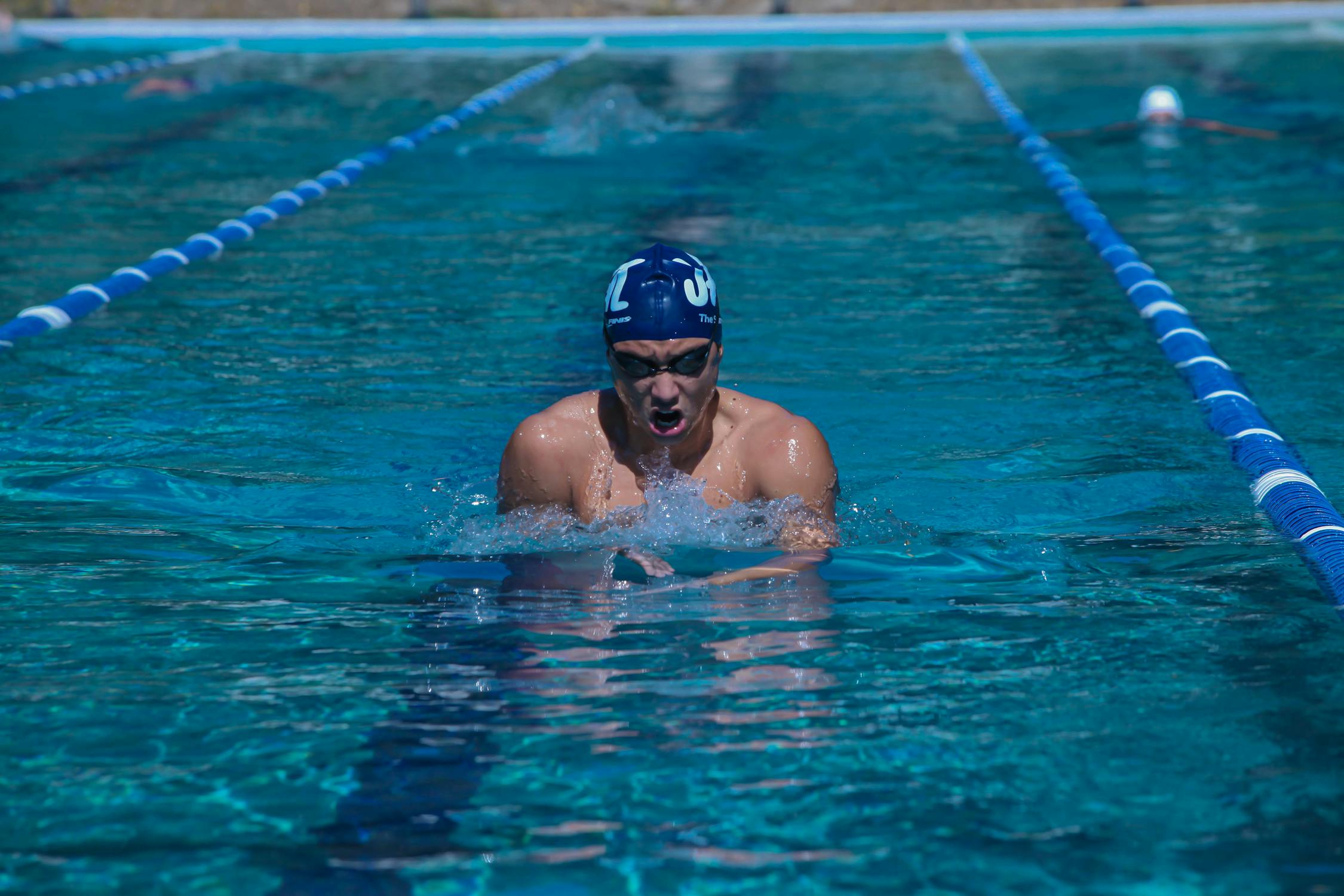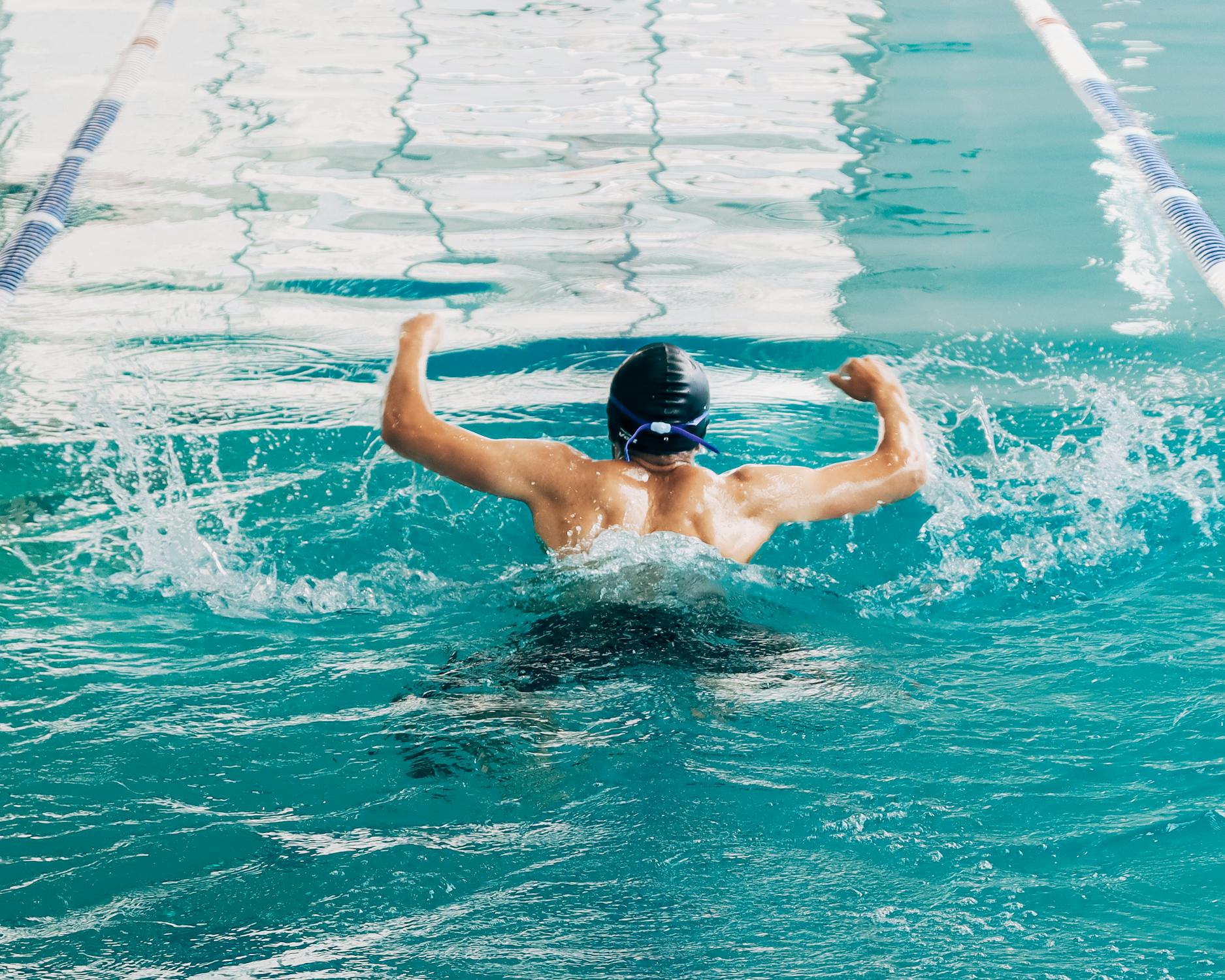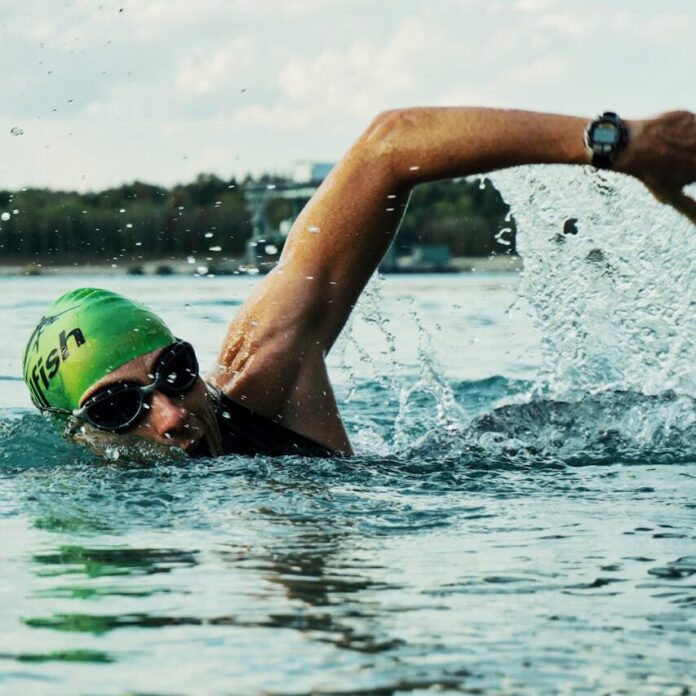Swimming is a water sport with multiple health and fitness benefits. This activity involves moving through water using coordinated body movements and can be practiced both recreationally and competitively.
Introduction to the world of swimming
Considered one of the most complete sports, swimming requires almost all muscle groups and provides an excellent cardiovascular workout.
There are four main swimming styles recognized in official competitions:
- Craul (freestyle)
- breast stroke
- Butterfly
- Back
Each style has a specific technique and requires different muscle groups. Learning these styles correctly requires practice and, usually, the guidance of a qualified instructor. Mastering multiple styles provides versatility and a complete workout, allowing swimmers to diversify their routine.
Swimming offers numerous benefits, including improving overall physical fitness, toning muscles, increasing cardiovascular capacity, reducing stress, developing coordination, improving flexibility, efficiently burning calories, and reducing the impact on joints.
Regardless of age or fitness level, swimming can be an enjoyable and beneficial activity for anyone. It is important to start gradually and follow water safety rules. For beginners, it is recommended to learn basic techniques under the supervision of a qualified instructor. To fully enjoy this activity, it is essential to have the right swimming equipment , which will provide you with comfort and performance in the water.

Crawl style – technique and benefits
The crawl style, also known as freestyle, is the fastest and most efficient swimming technique. This style is characterized by the alternating movement of the arms and legs, which gives the body a continuous forward momentum.
Crawl style technique
The key elements of the crawl technique are:
- Body position – horizontal, facing the water
- Arm movement – alternating, with traction under water and return above water
- Foot tapping – alternating, up and down
- Breathing – lateral, synchronized with arm movement
The swimmer keeps their head submerged in the water, with their eyes open, and exhales into the water. To inhale, the head rotates to the side as one arm comes out of the water. This breathing technique allows the body to maintain an aerodynamic position, reducing drag. For optimal visibility and eye protection, the use of quality swimming goggles is recommended.
The benefits of the crawl style
Regularly practicing front crawl swimming offers numerous advantages:
- Develops the muscles of the whole body
- Improves cardiovascular and respiratory capacity
- Burns calories efficiently – up to 700 kcal/hour
- Tones the muscles of the back, arms and legs
- Increases swimming endurance and speed
- Improves coordination and agility
- Reduces stress and anxiety
Because of its efficiency, the crawl is the preferred style in freestyle swimming competitions and triathlon events. It is also very useful in utility and rescue swimming, allowing for rapid movement through the water.

Breaststroke – technique and benefits
Breaststroke, also known as the breaststroke, is one of the most popular swimming styles, especially among amateur and beginner swimmers. This style is characterized by symmetrical arm and leg movements, making it a relatively easy technique to learn and execute.
Breaststroke swimming technique
The key elements of breaststroke swimming technique are:
- Body position – horizontal, face in the water and head slightly raised
- Arm movement – symmetrical, with a semicircular thrust underwater
- Leg movement – symmetrical, similar to the movement of a frog
- Breathing – synchronized with raising the head with each movement cycle
The complete breaststroke cycle consists of a glide, arm pull, arm recovery, leg kick, and another glide. For an efficient and comfortable execution, it is important to wear appropriate swimming trunks that allow you freedom of movement and reduce water resistance.
Benefits of breaststroke swimming
Regularly practicing breaststroke swimming offers numerous benefits for health and fitness:
- Improves cardiovascular and respiratory capacity
- Tones the muscles of the chest, arms and legs
- Helps correct posture and reduce back pain
- Provides a low-impact workout, ideal for people with joint problems
- Contributes to reducing stress and improving overall well-being
- Develops flexibility, especially in the hips and knees
To correctly execute the breaststroke technique, it is essential to pay attention to maintaining an aligned body position, correct synchronization between movements, and executing a gliding phase after each complete cycle.

Butterfly style – technique and benefits
The butterfly stroke is one of the most spectacular and demanding types of swimming. This style is characterized by symmetrical arm movements and a strong undulation of the body, similar to the swimming of a dolphin.
Butterfly style technique
The key elements of butterfly swimming technique are:
- Body position – horizontal, with strong undulations
- Arm movement – symmetrical, with recovery above the water
- Foot kicking – technique called “dolphin kick”
- Breathing – synchronized with raising the head and shoulders
The complete butterfly stroke cycle includes the entry of the arms into the water, the underwater thrust, the pushing and recovering of the arms above the water, two kicks for each complete arm cycle, and synchronized breathing.
Benefits of the butterfly style
Regularly practicing butterfly swimming offers numerous advantages:
- Strongly develops the muscles of the back, shoulders and chest
- Significantly improves cardiovascular capacity
- Burns a large number of calories – up to 450 kcal/30 minutes
- Increases spinal flexibility
- Improves body coordination and balance
- Develops muscle strength, especially in the upper body
For correct execution, synchronization between arm movements, body undulation and leg strokes, as well as maintaining a constant rhythm of movements, is essential. Using appropriate swimming equipment can help improve performance and reduce water resistance.

Backstroke – technique and benefits
Backstroke is characterized by the body position with the back in the water and alternating movements of the arms and legs.
Backstroke technique
The key elements of backstroke technique are:
- Body position – horizontal, with your back in the water and your face up
- Arm movement – alternating, with recovery above water
- Foot tapping – alternating, up and down
- Breathing – natural, face always above water
The complete cycle includes entering an arm into the water above the head, underwater traction, exiting the arm from the water near the hip, recovering the arm above the water, and continuous kicking.
Benefits of swimming on your back
Regularly practicing backstroke offers advantages such as:
- Improving posture and reducing back pain
- Development of the muscles of the back, shoulders and arms
- Increasing spinal flexibility
- Providing an effective cardiovascular workout
- Reducing stress on joints
For correct execution, it is important to maintain an aligned body position, with your ears in the water, and to correctly synchronize arm movements with foot strikes.
Comparison of swimming styles
The four main swimming styles have distinct characteristics:
Speed and efficiency
- Craul – the fastest and most energy efficient
- Butterfly – second in speed, but the most physically demanding
- Back – moderate speed, less efficient than crawl
- Breaststroke – the slowest of the four competitive styles
Technical difficulty
- Bras – the easiest to learn for beginners
- Back – relatively simple, no breathing problems
- Craul – requires coordination between arms, legs and breathing
- Butterfly – the most complex and difficult to master
Muscle strain
- Craul – provides a balanced workout for the entire body
- Bras – emphasis on leg and chest muscles
- Butterfly – intensely demands the muscles of the back, shoulders and abdomen
- Back – especially develops the muscles of the back and arms
The choice of style depends on the swimmer’s goals, whether it’s performance, fitness, or recreation. Mastering multiple swimming styles provides versatility and a complete workout.

Conclusions and recommendations for swimmers
Regardless of your level of training, there are a few essential aspects for all swimmers:
- Choose the right swimming style for your goals and level
- Pay attention to correct technique for efficiency and injury prevention
- Practice the breathing techniques specific to each style
- Hydrate properly before, during and after workouts
- Always warm up before entering the water
To steadily progress in swimming, it is recommended to:
- Set realistic and measurable goals
- Vary your workouts, including technique, speed, and endurance exercises
- Consider taking classes or hiring a coach
- Use appropriate equipment, such as swimming goggles and protective helmets
- Listen to your body and get enough rest between workouts.
Swimming is an activity that can be practiced throughout life, offering ongoing benefits for health and well-being. Whether you are a beginner or an experienced swimmer, there is always room for improvement and new challenges in the fascinating world of swimming.
To improve your performance and prevent injuries, it’s important to pay attention to other aspects of your fitness. For example, stretching exercises can help improve flexibility and prevent muscle cramps. Also, to keep yourself motivated and avoid monotony, you can try incorporating other muscle-strengthening exercises into your routine, such as abdominal exercises , which will help improve stability in the water.



